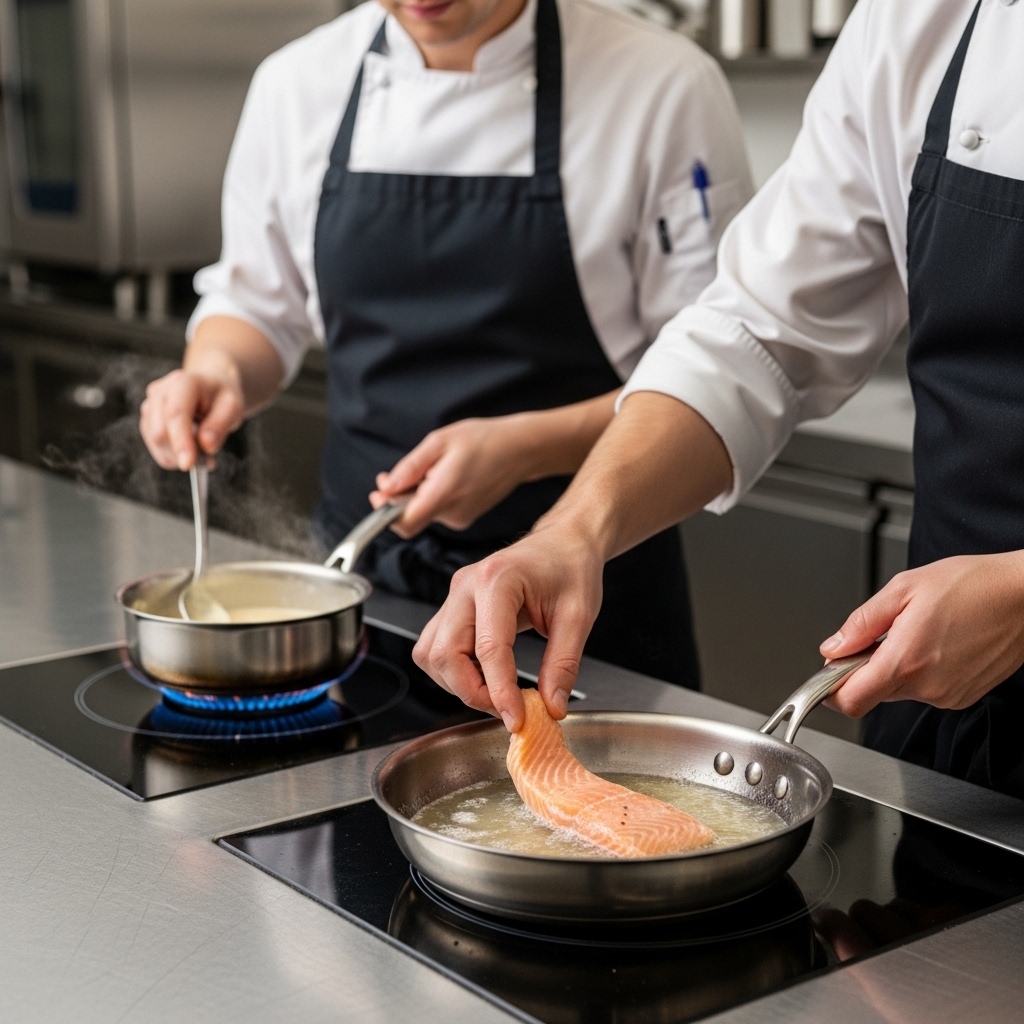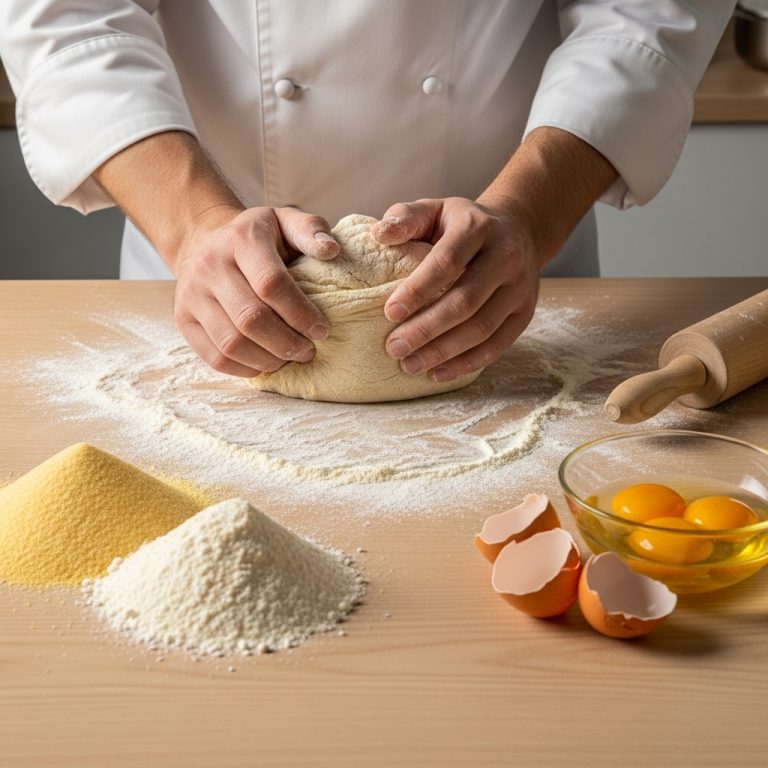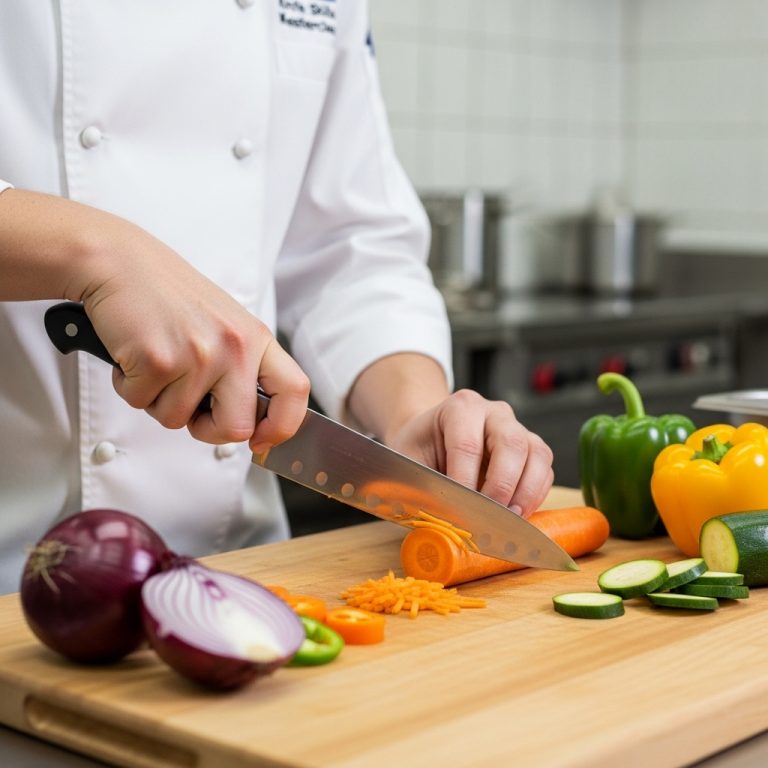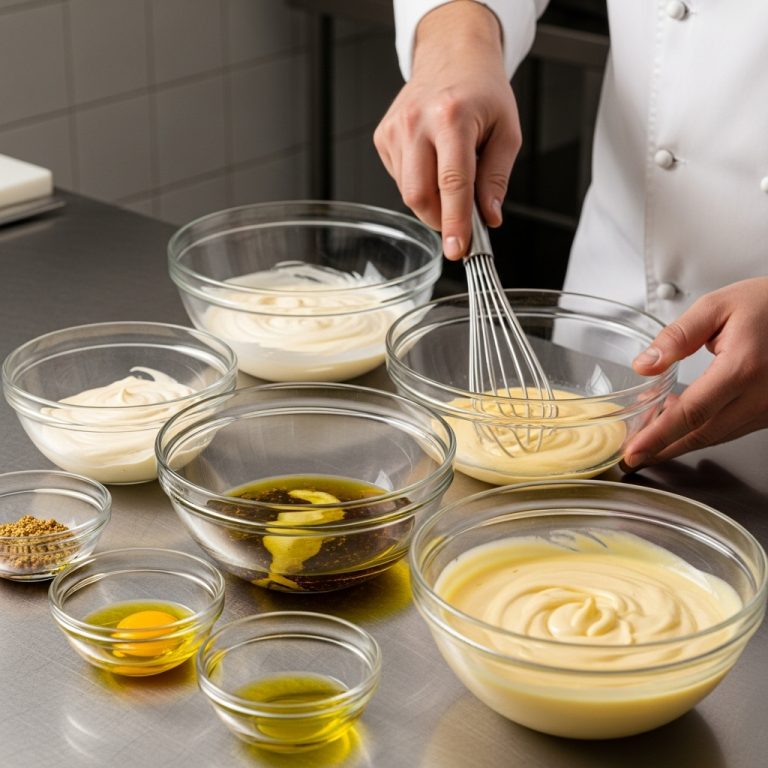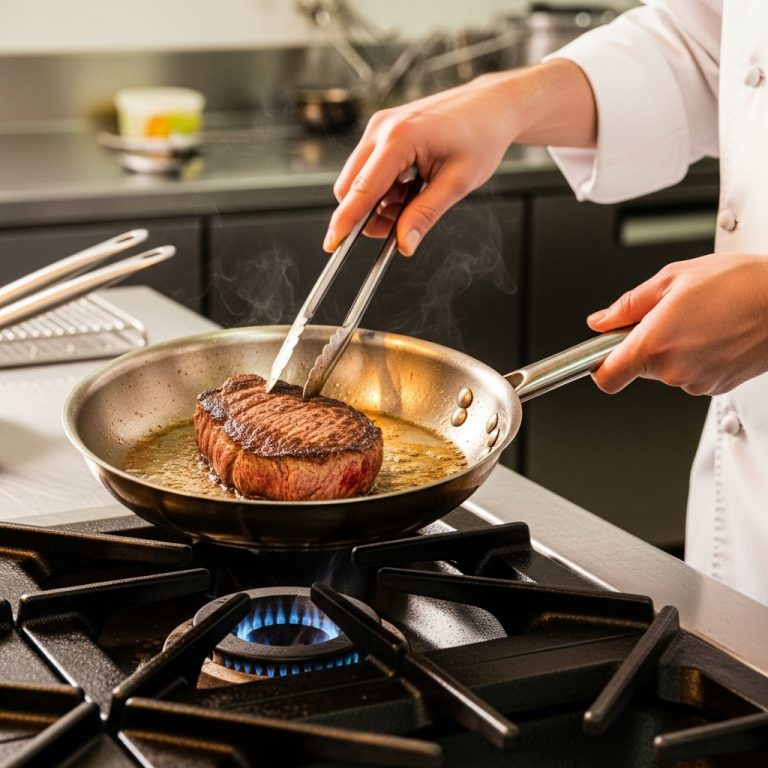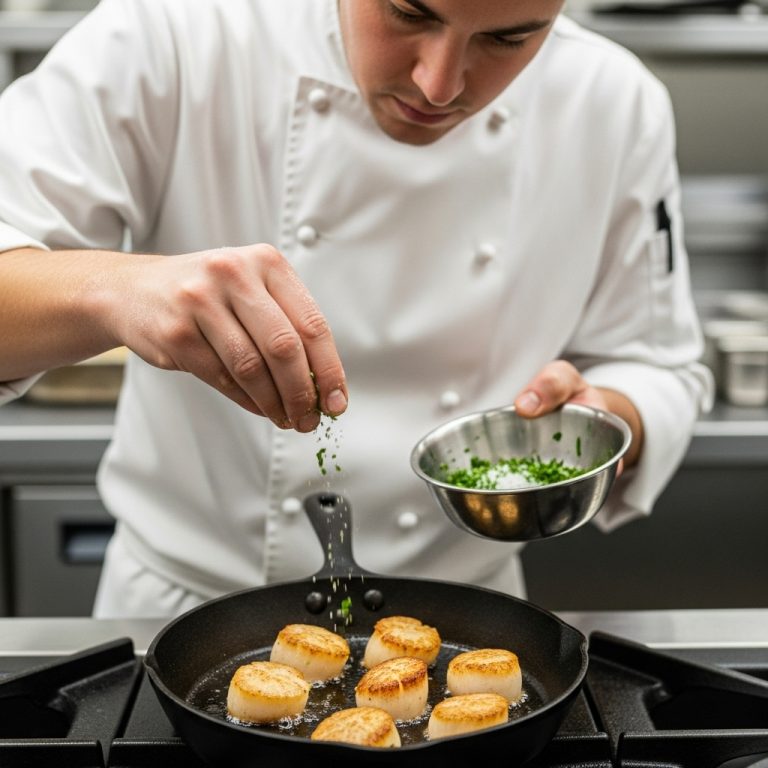Poaching and Gentle Heat
Objective: The objective of this lesson is to teach home cooks how to poach ingredients, particularly eggs, with gentle heat, while understanding the science behind it.
Core Concept: Poaching is a cooking method that involves gently heating liquid, typically water or milk, to cook an ingredient, such as eggs, delicately in the liquid. This lesson will focus on poaching eggs and understanding how to use gentle heat to achieve perfect results.
Tools & Setup:
– A large saucepan or pot
– A slotted spoon or egg flipper
– White vinegar or lemon juice (optional)
– Fresh eggs
– A fine mesh sieve
– Paper towels or a clean kitchen towel
– A plate for serving
Step-by-Step Practical:
1. Fill the saucepan or pot with water, ensuring there is enough room for the eggs to move around freely. Adding a splash of white vinegar or lemon juice can help prevent the egg whites from spreading too much during poaching.
2. Place the saucepan on medium heat and allow the water to reach a gentle simmer. The water should be hot but not bubbling aggressively. This is important for delicate poaching of eggs.
3. While waiting for the water to reach the right temperature, crack an egg into a small bowl or ramekin. Using this method prevents any shells from getting into the poaching liquid.
4. Once the water has reached the desired temperature, gently slide the egg into the water using the slotted spoon or egg flipper. Do not stir or jostle the water too much, as this can cause the egg white to spread and be less visually appealing.
5. Allow the egg to poach for 3-4 minutes, depending on your desired yolk consistency. For a runny yolk, 3 minutes is ideal. For a slightly firmer yolk, aim for closer to 4 minutes.
6. Use the slotted spoon or egg flipper to carefully remove the poached egg from the water. Allow excess water to drip off before placing the egg on paper towels or a clean kitchen towel to absorb any remaining moisture.
7. Repeat steps 3-6 for each egg you wish to poach. Serve your poached eggs on a plate and enjoy!
Culinary Science Insight: The gentle heat during poaching is essential because it allows the proteins in the egg to cook slowly, creating a smooth, tender texture. Overheating can cause the proteins to become rubbery or tough. Adding vinegar or lemon juice to the poaching liquid helps coagulate the egg white, preventing it from spreading too much and resulting in a neater presentation.
Pro Tips & Variations: To add flavor to your poached eggs, you can use different liquids for poaching, such as milk or wine, or even broths like vegetable or chicken stock. For a more visually appealing dish, you can create shapes with the egg whites using various tools, such as silicone molds or by making a “nest” with the egg white around the yolk.
Homework / Practice: Practice poaching eggs for breakfast three times this week. Try varying the cooking time to see how it affects the final texture of the yolk. You can also experiment with different liquids for poaching and various shapes for presentation.
Reflection: In this lesson, you learned how to properly poach eggs using gentle heat. By understanding the science behind this technique, you can now create delicious, perfectly poached eggs for a variety of dishes. Remember, practice makes perfect, so continue experimenting with different techniques and liquids to find your preferred method for poaching eggs.

